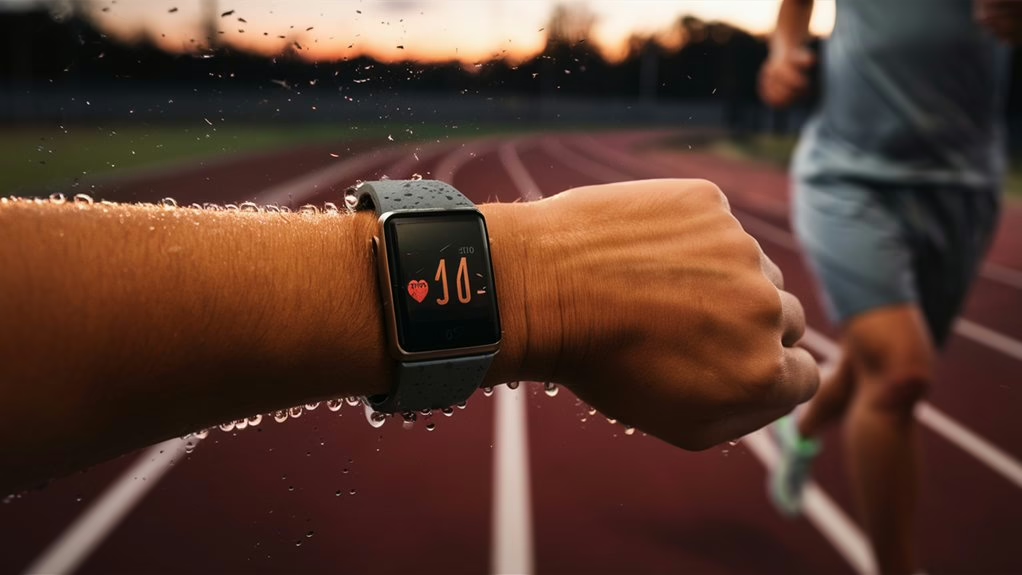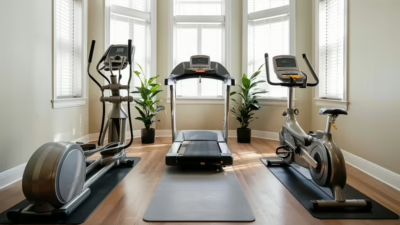Starting a cardio workout routine doesn’t have to be complicated. You’ll find several beginner-friendly exercises you can do right at home, including jumping jacks, marching in place, and gentle jogging. Begin with 20-minute sessions, 3-4 times per week, allowing your body to rest between workouts. You’ll want to wear comfortable clothes, stay hydrated, and always warm up for 5-10 minutes before exercising. Track your progress using a fitness journal or smartphone app to monitor improvements in your endurance and energy levels. Understanding the proper techniques and safety guidelines will help you build a sustainable fitness journey that transforms your health.
Why Cardio Benefits Your Body

Diving into the world of cardio reveals an impressive array of health benefits that can transform your overall well-being. When you’re starting cardio exercise, you’ll quickly notice improvements in your heart health, with regular workouts reducing your risk of cardiovascular disease by up to 59%.
As you begin your cardio journey, you’re also strengthening your muscles, improving joint health, and building stronger bones.
For those exploring cardio exercises for beginners, you’ll be pleased to know that these workouts help manage your weight effectively. Your body becomes better at burning fat, and you’ll experience improved insulin sensitivity, which helps prevent type 2 diabetes.
Even simple beginner cardio workouts can boost your metabolism and help regulate hormones that control appetite.
What’s particularly exciting is how cardio benefits your brain and mental well-being. You’ll sleep better, feel more energized throughout the day, and experience reduced stress levels.
Regular cardio can even protect your brain health by reducing the risk of dementia and improving cognitive function, helping you stay sharp and focused in your daily activities.
Total body fitness is enhanced through consistent cardiovascular exercise, leading to better overall physical performance.
Simple Cardio Exercises at Home
Transform your living room into a personal fitness studio with simple yet effective cardio exercises that require no equipment. For those just starting their fitness journey, these easy cardio workouts for beginners will help you build endurance and strength from the comfort of your home.
Start with basic movements that’ll get your heart pumping while being gentle on your joints. Focusing on functional training helps develop real-world movement patterns that benefit everyday activities.
Here are five beginner-friendly exercises to kickstart your cardio routine:
- Jumping jacks: Stand with feet together, jump while raising your arms, and return to starting position
- Marching in place: Lift your knees high while engaging your core and swinging your arms naturally
- Jogging in place: Start slowly and gradually increase your pace as you build stamina
- Lateral shuffles: Move side-to-side with slightly bent knees to improve agility
- Toe taps: Alternate tapping your feet on a step or imaginary line for a low-impact workout
As you become more comfortable with these movements, you can increase your workout duration and intensity.
Remember to maintain proper form throughout each exercise, and take short breaks when needed to catch your breath and stay hydrated.
Building Your Weekly Workout Plan

Every successful fitness journey begins with a well-structured weekly workout plan. When you’re just starting out, it’s essential to create a schedule that’s both manageable and effective, allowing your body to adapt gradually to your new routine.
Start by mapping out three to four cardio sessions per week, making sure to space them evenly with rest days in between. You’ll want to begin with 20-minute sessions at a moderate intensity, where you can still hold a conversation while exercising. As your fitness improves, you can slowly increase both the duration and intensity of your workouts.
Your weekly plan should include different types of cardio activities to keep things interesting and challenge your body in new ways. For example, you might try brisk walking on Monday, stationary cycling on Wednesday, and a beginner-friendly HIIT session on Friday.
Don’t forget to monitor your heart rate during these sessions to ensure you’re working at the right intensity level, and always listen to your body’s signals. Remember, consistency is more important than intensity when you’re first starting out, so choose activities you’ll actually enjoy and stick with. For HIIT workouts specifically, using a heart rate monitor will help you maintain the optimal intensity levels needed to maximize your results.
Safety Tips for New Exercisers
Now that you’ve planned your workout schedule, staying safe during exercise should be your top priority. Before jumping into any new fitness routine, it’s essential to check with your doctor, especially if you have existing health conditions like high blood pressure or diabetes.
When you’re ready to start, remember that proper preparation can help prevent injuries and make your workouts more effective.
To ensure a safe and successful workout experience, follow these essential safety guidelines:
- Always start with a 5-10 minute warm-up of dynamic stretches to prepare your muscles
- Wear loose-fitting, comfortable clothes and appropriate shoes for your chosen activity
- Stay hydrated by drinking water before, during, and after exercise
- Listen to your body and take breaks when you need them
- Cool down with gentle stretches after your workout
Remember to progress gradually with your exercise intensity, and don’t push yourself too hard too soon.
If you’re exercising outdoors, be mindful of weather conditions and air quality. During hot weather, avoid working out during peak heat hours and take regular breaks every 45-60 minutes to prevent overheating.
Age-specific modifications should be considered when developing your cardio exercise routine to ensure optimal safety and effectiveness.
Track Your Cardio Progress

Tracking your cardio progress is one of the most powerful ways to stay motivated and ensure you’re meeting your fitness goals. Whether you’re using a fitness tracker, smartphone app, or simple workout journal, keeping tabs on your progress helps you see how far you’ve come and where you need to improve.
Start by establishing your baseline measurements, including your resting heart rate, workout duration, and how you feel during exercise. As you continue your cardio journey, you’ll want to monitor key indicators like your heart rate recovery time and endurance levels. Many beginners find that tracking these metrics becomes easier with wearable devices that automatically record their workout data.
Don’t forget to celebrate your improvements, no matter how small they might seem. You’ll likely notice that your resting heart rate decreases and you’re able to exercise longer without feeling winded.
Keep a record of these victories in your workout journal, and consider sharing your progress with a friend or family member who can help keep you accountable. Remember to adjust your workout routine based on the data you collect, gradually increasing intensity as your fitness improves. Consider incorporating strength training sessions into your routine, as building muscle mass can help boost your metabolism and enhance weight loss results.
Starting your cardio journey is a big step toward better health, and you’ve got all the tools you need to succeed. Remember to start slowly, listen to your body’s signals, and gradually increase your workout intensity as you build strength and endurance. By tracking your progress, staying consistent with your routine, and following proper safety guidelines, you’ll transform these beginner workouts into lifelong healthy habits that’ll keep your heart strong and your energy levels high.



